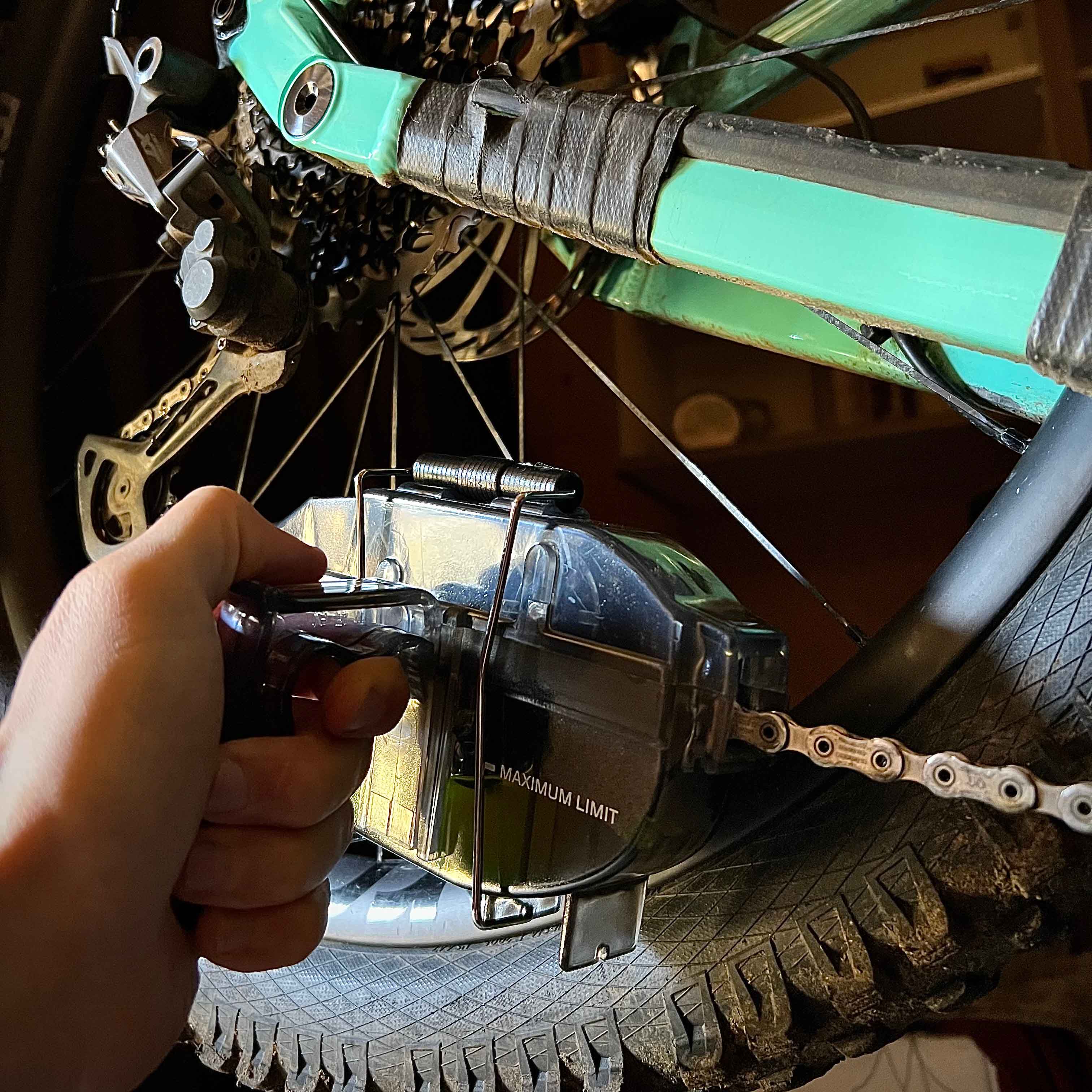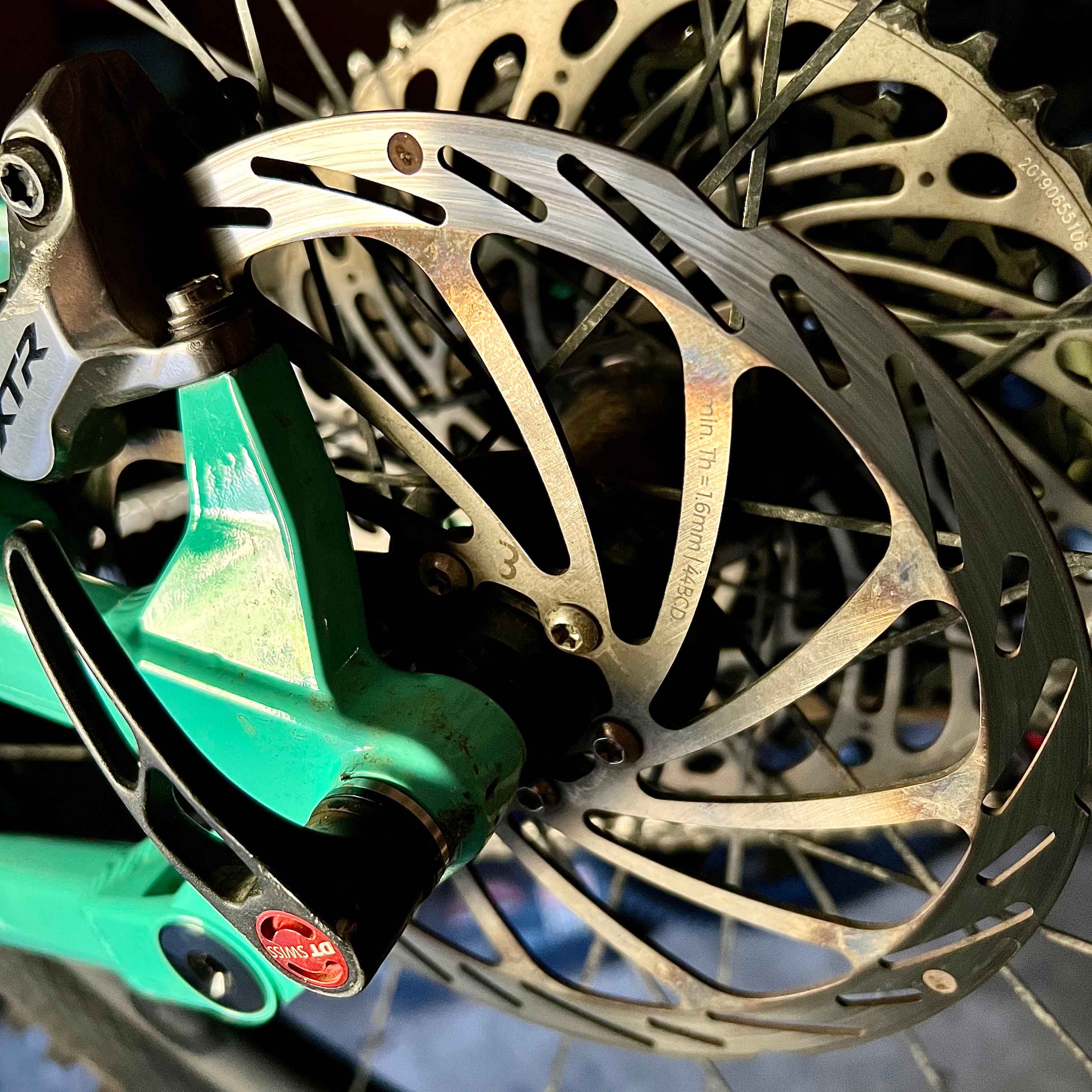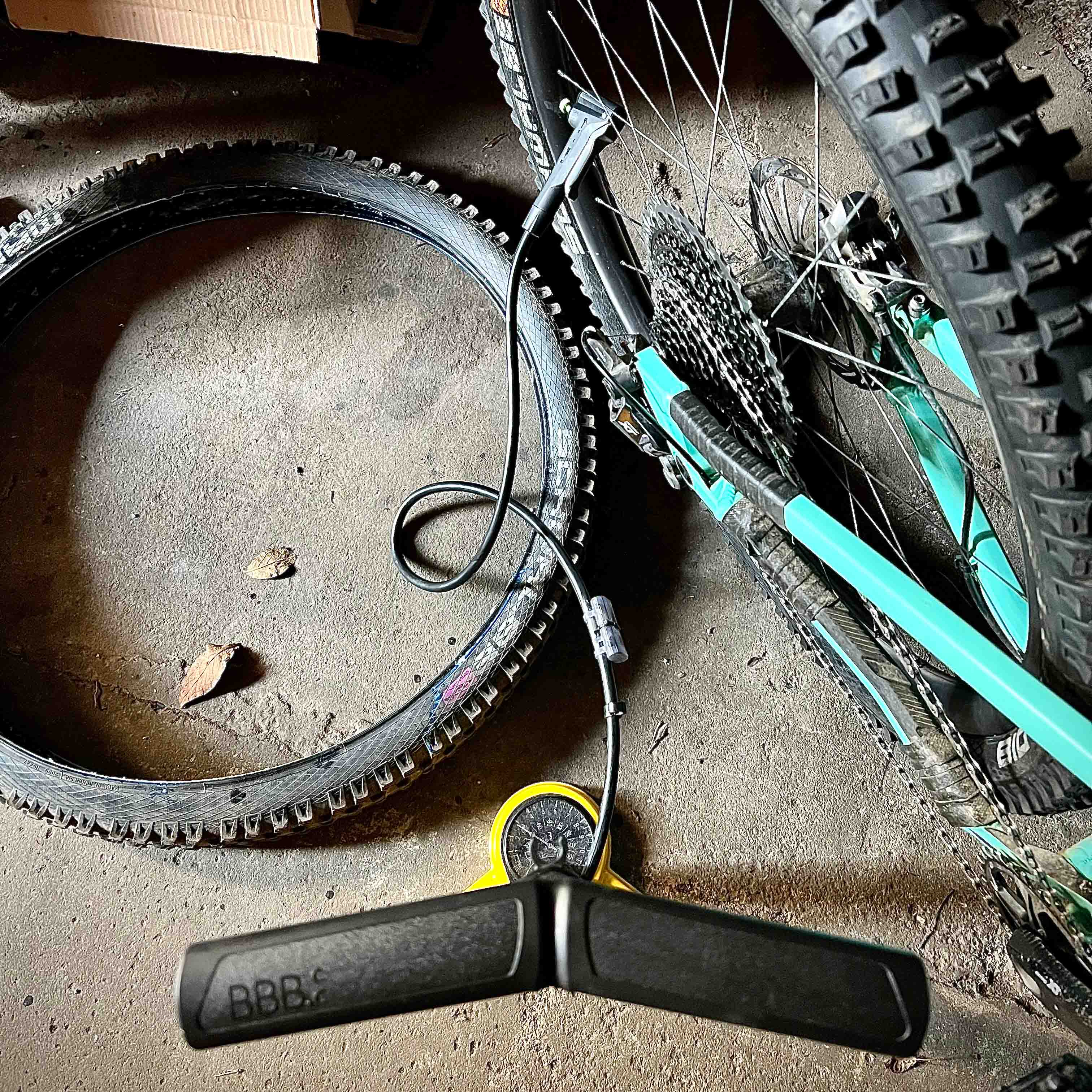Watch That Manual | How to replace disc brake pads?
Watch That Manual | How to replace disc brake pads?
Ready story

TEXT / JAMES SHIRLEY | PHOTOS / JAMES SHIRLEY
Time never stops and that constant shift keeps things interesting. Variety is the spice of life after all. As the seasons roll by the weather changes and the trails evolve. I ride year-round and as far as I’m concerned, winter is something to be enjoyed. The woods become wet and the trails in the trees become ever more treacherous with their white polished roots and brown muddy holes. Conditions like this just add to the challenge and that feeling of being on the edge of control is the ultimate goal.


At the end of almost every winter day, I come back head to toe covered in muck. My clothes keep me dry and my bike keeps me safe so it’s important to give back the love that I get. I always wash them down as soon as I’m home because it’s a lot easier to remove the dirt before it dries (this way I don’t clog up the washing machine either). Alternatively, the hose can freeze solid and the mud turns to ice! That’s another good reason to clean up before dark and the frost sets in. I do, however, also have a hot water hose for when I get my timings all wrong! It’s luxurious.
To be fair, a bike generally still works if it’s dirty but the main thing to worry about is the drivetrain –it takes an absolute pounding if you don’t keep it clean. A nice option to have is the Bright & Fresh which can be used to specifically clean the chain from dirt, oil and grit. I wash my bike so regularly that the grime never seems to build up but it’s a handy thing if you don’t have access to a proper bike wash. I still use it though as a little treat every now and then to keep things running as smooth as can be.
Drivetrain components aren’t cheap and the system becomes way less efficient if it isn’t well-cleaned and lubricated. So that’s another reason to keep on top of your bike’s healthy hygiene.


The first thing to wear out is usually the chain. If it stretches too much then all the cogs (cassette, jockey wheels, and chainrings) will wear out too (or at least at a much faster rate) as they all mesh together into one horrible mess. If and when that tired chain does eventually die then the whole shebang will need to be replaced because a new chain will skip and jump across the damaged teeth that are supposed to hold it in place. It, therefore, makes sense to use a ChainChecker to measure the length/growth/wear of the chain. I do this quite regularly and even more so in the winter when I’m putting big rides in through the mud and the grit where chain wear is happening at a much faster rate.
As can be seen in the picture, my chain is currently at the 0.75 mark. It would be tempting to swap it now as it is almost running out, but the tool suggests that there is a bit more life left in it yet so I’ll delay fitting a new chain until this one is at or just below the 1.0 limit...A very useful tool as it gives me peace of mind as well as saving time and money!


As far as set-up changes go, my bike is quite universal regardless of the season but there are a couple of things I like to do. The first is to change my brake pads. Gold-sintered pads have metal shards in the compound which makes them tough, durable and heat up very quickly. This is ideal for when the conditions are cold and wet. The extra heat build-up helps to evaporate any water on the disc surface and the pad has a lot of bite on the disc which helps to inspire confidence when things get tricky.
In warm, dry climates the gold-sintered pads tend to overheat on long descents and the pad surface becomes glazed. This results in a loss of power and quite often a very unpleasant screeching sound! I, therefore, switch to the blue organic compound when the sun comes out. These pads have a very soft compound. They, therefore, provide crazy amounts of power and help keep things cool. Their soft nature means that they wear out a lot faster than the sintered pads but their summertime-stopping traits are far superior. After switching them around, the brake pads need to bed in with the disc so a few emergency stops in the car park are usually enough to lay down a thin layer of the compound for the brakes to be back to their best again.


At this point, it’s also worth having a quick look at the wear indicators on the rotors to see if they’ve worn down to their 1.6mm limit (the little round circles on the braking surface disappear when the disc is sufficiently worn). Not all rotors have this but the BBB Cycling ones do and it’s a feature I really like about them. Safety first kids!


The second big thing I tend to do is change my tire compound. In the winter, the trails are very wet and slippery. A soft compound sticks to the ground better and the slower rubber rebound helps to keep the tire planted on the surface. This type of tire rolls slower and wears faster but in the winter the ground is usually very soft (either from the rain but also from the action of freeze-thaw which can ruin even the smoothest of hard pack gravel surfaces) which offers little grip and a very high rolling resistance regardless of tire choice.
As the trails dry out and settle again, rolling speed becomes more crucial so this is when I switch to a harder compound on the back of my bike. Tread pattern influences performance too but I tend to keep to an aggressive tread unless the trails are especially flat where I might consider some kind of semi-slick. On the front, I nearly always stick to a soft compound tire with decent tread so that I can maintain high corner speeds and stay in control under heavy braking.
For me, my mudguard always stays on –just one splodge of dirt to the eye could ruin any run.


The final thing to remember is to give your bike a regular bolt check. It sounds simple but its amazing how often things come loose –especially on a mountain bike. Regardless of getting rattled to bits, a change in temperature can influence your component tolerances so it’s definitely worth doing a bolt check more often than you’d think. Doing it quickly by hand is fine but better still if you’ve got a torque wrench and you know the settings required.